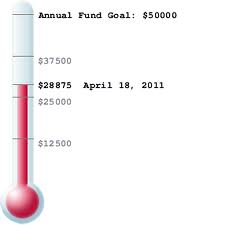 I attended the Chicago Cubs Convention this last weekend with my partner, father, brother and nephew. This is the 27th annual convention, and I think this is the fourth or fifth time I’ve attended with my family. As many of you know, I look for signs of philanthropy everywhere I go in life. It is one of my quirky charms. 🙂
I attended the Chicago Cubs Convention this last weekend with my partner, father, brother and nephew. This is the 27th annual convention, and I think this is the fourth or fifth time I’ve attended with my family. As many of you know, I look for signs of philanthropy everywhere I go in life. It is one of my quirky charms. 🙂
It would’ve been easy to write about the $4 million that the Chicago Cubs have raised for charities with the proceeds from this convention, but I decided to look a little deeper this year. Not surprisingly, I found three things that the Cubs organization does at its annual convention that non-profit and fundraising professionals can take away from the experience.
A Sense of Accountability
Everyone in America knows the Chicago Cubs haven’t won a World Series in more than 100 years. This is the equivalent of a non-profit organization being unable to demonstrate community impact or program outcomes to its donors. To some people, it is surprising that the Cubs have any fans remaining with such an amazing inability to produce any return on investment (ROI).
However, the convention does something interesting for the Cubs organization. It gives fans the sensation they can hold the team “accountable”. There are sessions with ownership , management, coaches, and players. During those sessions, fans are permitted to ask questions and make comments from the floor.
While it is important for non-profit agencies to demonstrate ROI and impact, it looks like letting donors “hold you accountable” can go a long way when your ability to generate outcomes might still be a few years off.
 It is all about the upgrade
It is all about the upgrade
It shouldn’t surprise you that the cost for last weekend was high (e.g. convention passes, hotel, and food). Tack onto this pricetag the cost of attending a few Cubs games throughout the summer, and it becomes apparent that being a Cubs fan isn’t cheap. However, this didn’t stop the Cubs from gently trying to up-sell me at every turn.
Have I considered attending spring training with the team in Arizona? What about signing up for a tour of Wrigley Field? Will I give some thoughtful consideration to upgrading from a fan who just attends a few games every year to a 9-Game Pack ticket holder?
I’ve met too many non-profit organizations who are afraid of asking their donors for more. The excuse usually given is that they’re afraid of “offending” those donors. Well, I can honestly say that I was never once offended by the Chicago Cubs and their vendors. I highly doubt most donors would either. However, I suspect that the key to not offending anyone is in how you go about doing it. In each of the previous up-sell examples, the Cubs had a very well-defined “case for support” (aka sales pitch).
If non-profit organizations invested more time in crafting solid case statements focused on why special event donors should also become annual campaign donors, I suspect a lot more money would be raised.
 Becoming part of the family
Becoming part of the family
At one point during the weekend, I had to giggle to myself because I paid the Cubs a lot of money for the right to be their captive all weekend and permitted them to market to me. While this realization should make me feel stupid (because they should be paying me for that privilege and not vice versa), I really don’t feel that way. As a matter of fact, I feel lucky and a little privileged to have been part of the experience.
The Cubs made every one of their guests feel special and a part of their family. Everyone likes to “belong” to something (e.g. church, alumni associations, service organizations, etc), and the Cubs have created an experience that nurtures this feeling, which in the end helps them make a lot of money.
Non-profit organizations who put their minds to it can turn their marketing materials and donor recognition societies into a similar kind of experience for their donors. I suspect that those who do so will see their donor loyalty rates skyrocket.
In closing
As a lifelong Cubs fan, all I have to say is that I believe a World Series title is waiting for us right around the corner in spite of the fact that the Cubs have embarked on a major “team re-building project” this year. I guess hope does spring eternal, which is a good thing for some non-profit organizations.
Please use the comment box below to weigh-in with your thoughts. What opportunities do your donors have to hold your agency accountable? What are you doing to instill a sense of family among your donors? What are you doing to upgrade donors gifts and giving opportunities?
Here’s to your health!
Erik Anderson
Founder & President, The Healthy Non-Profit LLC
www.thehealthynonprofit.com
erik@thehealthynonprofit.com
http://twitter.com/#!/eanderson847
http://www.facebook.com/eanderson847
http://www.linkedin.com/in/erikanderson847























